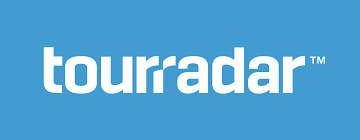Top 10 Best Treks in Nepal
24th September 2018
Nepal – home to eight out fourteen highest peaks, offers dramatic locations and destination for trekking and other adventurous activities. Apart from world’s highest peak, Mt. Everest standing at 8,848m, Nepal flourishes varieties of culture and customs that indicates the country’s diversity stunningly. Abundantly blessed with diversity of floral and faunal species, Nepal is truly a paradise for every backpackers. Highly fascinated with religious sites and spiritual settings, trekking in Nepal is quite a wholesome and sublime affair. The Himalayan terrain of Nepal lures thousands of trekkers every year. Trekking in Nepal is the best way to introduce yourself with remote Nepal, authentic culture and high Himalayas. With unique combination of nature and culture, Nepal trekking route are definitely worth the money and effort. In this article, we have listed the top 10 best treks in Nepal to provide the brief information on what trekking option you have in Nepal. The term best depends on client preference and expectation. Here we have tried to enlist the top trekking destination in Nepal; analyzing the difficulty, duration, cultural elements, remoteness and cost. Choose the right Nepal trekking destination which suits your preference:
Everest Base Camp Trek
 The Everest Base Camp Trek is the best available trek option in Nepal for those seeking to admire the close-up view of world’s highest mountains. The trek offers you a great opportunity to explore the authentic Sherpa villages and their unique lifestyles. Scaling the summit of Mt. Everest at 8,848m is dream for every adventure enthusiast. Trekking to the Base Camp of Everest is no less than Adventure. This classical treks offers a wonderful walk along the footprints of legendary mountaineers. On the way, you will admire the spectacular mountain landscapes, rivers, lush forest and amazing Sherpa culture. The hospitality of Sherpa is truly intriguing. The trail traverses through the Sagarmatha National Park providing visitors up-close view of Nuptse, Lhotse and the Ama Dablam among many others. Kalapatthar, the vantage point, offers the amazing views of the Everest massif. It is one of the best trekking trip in Nepal with thousands of trekkers partaking it every year.
The Everest Base Camp Trek is the best available trek option in Nepal for those seeking to admire the close-up view of world’s highest mountains. The trek offers you a great opportunity to explore the authentic Sherpa villages and their unique lifestyles. Scaling the summit of Mt. Everest at 8,848m is dream for every adventure enthusiast. Trekking to the Base Camp of Everest is no less than Adventure. This classical treks offers a wonderful walk along the footprints of legendary mountaineers. On the way, you will admire the spectacular mountain landscapes, rivers, lush forest and amazing Sherpa culture. The hospitality of Sherpa is truly intriguing. The trail traverses through the Sagarmatha National Park providing visitors up-close view of Nuptse, Lhotse and the Ama Dablam among many others. Kalapatthar, the vantage point, offers the amazing views of the Everest massif. It is one of the best trekking trip in Nepal with thousands of trekkers partaking it every year.
Highlights
- Face-to-face view of might Mt. Everest and conquer the summit of Kalapatthar at 5,545m
- Astonishing view of panoramic peaks like Nuptse, Lhotse, Makalu, Ama Dablam, Cho Oyu and more
- Excellent view of glaciers, high altitude lake and close peek to Sherpa culture and their lifestyle
- Wonderful trekking experience in mountainous landscape
Lowlight
- High altitude teahouse offers basic services
- Trekkers have to walk back more or less via same trail
- The only option in case emergency is heli evacuation
Trek Facts
- Trekking Difficulty: Level 3 – Moderately Difficult
- Remoteness: Not Remote (if compared to other Himalaya trekking region)
- Best Season: March – May and October – November
- Accommodation: Teahouses and lodges
- Restricted Permit: Not Required
- Maximum Elevation: 5,545m at Kalapatthar
- Transportation: Flight to Lukla and no transportation available there onward
- Meals: Nepali Dish and more common international cuisine (Momo, Pasta, Noodle Soup, Pizza etc.)
- Accessible During Winter: Yes
- Cost: USD 800 – USD 3,000 (depending on service and itinerary)
Annapurna Base Camp Trek
 If Everest region represents country’s heart, Langtang’s a soul then Annapurna is country’s insatiable appetite. Annapurna Base Camp Trek is one of the most popular treks in Nepal. It brings you close to eight highest peak in the world with moderate – difficult trail. There are very few treks in Nepal that includes such a great landscapes and brings you so close to the eight thousand meter peak in such short time period like Annapurna Base Camp Trek. The ABC trek goes through the cultivated farmlands, lush rhododendron forest and high altitude landscapes with magnificent Himalayan back-drop most of the time. With its unique and incredibly spectacular setting and majestic Himalayan view, it ranks second best trekking destination in Nepal after Everest Base Camp.
If Everest region represents country’s heart, Langtang’s a soul then Annapurna is country’s insatiable appetite. Annapurna Base Camp Trek is one of the most popular treks in Nepal. It brings you close to eight highest peak in the world with moderate – difficult trail. There are very few treks in Nepal that includes such a great landscapes and brings you so close to the eight thousand meter peak in such short time period like Annapurna Base Camp Trek. The ABC trek goes through the cultivated farmlands, lush rhododendron forest and high altitude landscapes with magnificent Himalayan back-drop most of the time. With its unique and incredibly spectacular setting and majestic Himalayan view, it ranks second best trekking destination in Nepal after Everest Base Camp.
Highlights:
- Spectacular view of Annapurna massif – extending 55km long – Annapurna I, Annapurna South, Hiunchuli, Macchapuchhre (Fishtail) and more
- Stunning sunrise view over Himalayan horizon
- Great cultural experience
- Close peek to rural Nepalese lifestyle
- Possible to trek independently
Low-lights
- Highly crowded trail
- Accommodation problem in high season (better to book in advance)
Trek Facts
- Trekking Difficulty: Level 2 – Moderate to Difficult
- Remoteness: Not Remote (if compared to other Himalaya trekking region)
- Best Season: March – May and October – November
- Accommodation: Teahouses and lodges
- Required Permit: ACAP and TIMS
- Restricted Permit: Not Required
- Maximum Elevation: 4,130m at ABC
- Transportation: private vehicle and plane
- Meals: Nepali Dish and more common international cuisine (Momo, Pasta, Noodle Soup, Pizza etc.)
- Accessible During Winter: Yes
- Cost: USD 700 – USD 3,000 (depending on service and itinerary)
Annapurna Circuit Trek
 Incredibly Spectacular trekking trail! Annapurna circuit trek is one of comfortable long trek in Nepal with lots of delightful teahouses. This trek makes a circular trip to 55km Annapurna massif and includes all the major highlights that Annapurna region has to offer. From gigantic peaks to authentic cultural experience to geographical varieties and high passes, Annapurna circuit trek has it all!! Every year Annapurna region receives more than 10K trekkers (when Annapurna circuit, Poon Hill and Annapurna Base Camp is added).
Incredibly Spectacular trekking trail! Annapurna circuit trek is one of comfortable long trek in Nepal with lots of delightful teahouses. This trek makes a circular trip to 55km Annapurna massif and includes all the major highlights that Annapurna region has to offer. From gigantic peaks to authentic cultural experience to geographical varieties and high passes, Annapurna circuit trek has it all!! Every year Annapurna region receives more than 10K trekkers (when Annapurna circuit, Poon Hill and Annapurna Base Camp is added).
Highlights
- Crossing the world’s widest pass – the Thorong La Passs at 5,416m
- Diverse trekking experience – altitudinal differences – 760m to 5,416m
- Incredible cultural experience and wildlife discovery
- Magnificent view of 55km Annapurna massif
Lowlight
- Recent road construction has shorten the trekking trail
- Long trek route – trekkers have to walk for more than 10 days on remote mountain terrain
Trek Facts
- Trekking Difficulty: Level 3 –Moderately Difficult
- Remoteness: Not Remote (if compared to other Himalaya trekking region)
- Best Season: March – May and October – November
- Accommodation: Teahouses and lodges
- Required Permit: ACAP and TIMS
- Restricted Permit: Not Required
- Maximum Elevation: 5,416m at Thorong La Pass
- Transportation: Private vehicle and plane
- Meals: Nepali Dish and more common international cuisine (Momo, Pasta, Noodle Soup, Pizza etc.)
- Accessible During Winter: Yes
- Cost: USD 1,000 – USD 3,000 (depending on service and itinerary)
Poon Hill Trek
 Poon Hill at 3,210m is the most popular short trek in Nepal. It offers magnificent views of the Annapurna and Dhaulagiri Mountain. Poon Hill Trek is great introduction to rural mountains and Himalayan peaks. This trek is highly recommended if you are limited by time, budget and fitness.
Poon Hill at 3,210m is the most popular short trek in Nepal. It offers magnificent views of the Annapurna and Dhaulagiri Mountain. Poon Hill Trek is great introduction to rural mountains and Himalayan peaks. This trek is highly recommended if you are limited by time, budget and fitness.
Highlights
- Incredible sunrise view from Poon Hill viewpoint over the majestic Himalayas
- Cultural experience – Ghorepani and Ghandruk
- Easy accessible from Pokhara – need 2 days trekking from Pokhara
Lowlights:
- Not spectacular as BC trek
- The trail has quite a few stairs
Trek Facts
- Trekking Difficulty: Level – 1 – Easy
- Remoteness: Not Remote (if compared to other Himalaya trekking region)
- Best Season: March – May and October – November
- Accommodation: Teahouses and lodges
- Required Permit: ACAP and TIMS
- Restricted Permit: Not Required
- Maximum Elevation: 3,210m at Poon Hill
- Transportation: Private vehicle and plane
- Meals: Nepali Dish and more common international cuisine (Momo, Pasta, Noodle Soup, Pizza etc.)
- Accessible During Winter: Yes
- Cost: USD 500 – USD 1,500 (depending on service and itinerary)
Langtang Trek
 Langtang region is well-kept secret of Himalayas. It is best trek in Nepal if you have just a week long vacation in Nepal. Located to the north of Kathmandu towards Tibet, Langtang offers magnificent trekking with great cultural insights through its age-old monasteries and idyllic villages.
Langtang region is well-kept secret of Himalayas. It is best trek in Nepal if you have just a week long vacation in Nepal. Located to the north of Kathmandu towards Tibet, Langtang offers magnificent trekking with great cultural insights through its age-old monasteries and idyllic villages.
Highlights
- Summiting Tserko Peak at an elevation of 4,984m
- Closest trekking trail to Kathmandu
- Insight of Tibetan influenced culture
Lowlights
- The returning trail is almost same – up and down
Trek Facts
- Trekking Difficulty: Level – 2 – Moderate
- Remoteness: Not Remote (if compared to other Himalaya trekking region)
- Best Season: March – May and October – November
- Accommodation: Teahouses and lodges
- Required Permit: Langtang National Park entry Permit and TIMS
- Restricted Permit: Not Required
- Maximum Elevation: 5,000m at Tresko Ri
- Transportation: Private vehicle Meals: Nepali Dish and more common international cuisine (Momo, Pasta, Noodle Soup, Pizza etc.)
- Accessible During Winter: Yes
- Cost: USD 700 – USD 2,500 (depending on service and itinerary)
Manaslu Circuit Trek
 Restricted until early 90s, Manalsu circuit trek is great alternative to Annapurna circuit trek. It is far less-crowded than other regular trek; despite its increase in popularity after teahouses were being built. Highly recommended for adventure seekers who wish to admire the untouched nature and perceive the unique culture
Restricted until early 90s, Manalsu circuit trek is great alternative to Annapurna circuit trek. It is far less-crowded than other regular trek; despite its increase in popularity after teahouses were being built. Highly recommended for adventure seekers who wish to admire the untouched nature and perceive the unique culture
Highlights
- Crossing of Challenging Larke La Pass at 5,000m+ - great sense of achievement!
- Diverse geography – starting from 600m to 5,135m
- Change in scenery with every twist and turn
- Manaslu Base Camp – the foot of eight highest peak in the world
Lowlights
- Basic accommodation and limited food choices
- Remote (the region is yet to flourished by the impact of mass tourism)
Trek Facts
- Trekking Difficulty: Level – 4 – Moderate
- Remoteness: Remote (if compared to other Himalaya trekking region)
- Best Season: March – May and October – November
- Accommodation: Teahouses and lodges
- Required Permit: MCAP
- Restricted Permit: Required
- Maximum Elevation: 5,135, Larke La Pass
- Transportation: Private vehicle
- Meals: Nepali Dish and more common international cuisine (Momo, Pasta, Noodle Soup, Pizza etc.)
- Accessible During Winter: Yes
- Cost: USD 1,500 – USD 3,500 (depending on service and itinerary)
- Independent trekking: Not Possible
Everest Three Pass Trek
 Great for hardcore mountain trekkers – an adventure of a lifetime! Everest three pass trek covers almost every highlights that Khumbu region has to offer. It is long and demanding trek with 3 passes above 5,000m to conquer. Though the trek is physically challenging, the effort is well-compensated by stunning peaks, magnificent high valleys and wonderful trekking trails.
Great for hardcore mountain trekkers – an adventure of a lifetime! Everest three pass trek covers almost every highlights that Khumbu region has to offer. It is long and demanding trek with 3 passes above 5,000m to conquer. Though the trek is physically challenging, the effort is well-compensated by stunning peaks, magnificent high valleys and wonderful trekking trails.
Highlights
- Crossing of three incredible high passes – Cho La Pass, Renjo La Pass and Kongma La Pass
- Everest Base Camp Kalapatthar + Everest Gokyo Trek + Everest Panorama Trek = Everest Three Pass Trek
- Hiking through fascinating, diverse, remote and isolated landscapes
- Crossing of largest Himalayan Glacier in the world – Ngozumpa Glaicer
- Perfect view of 4 eight thousander (Everest, Lhotse, Makalu and Cho-Oyu)
Lowlights
- Not suitable for novice trekkers (unless physically and mentally strong)
Trek Facts
- Trekking Difficulty: Level – 4 – Challenging
- Remoteness: Remote (if compared to other Himalaya trekking region)
- Best Season: March – May and October – November
- Accommodation: Teahouses and lodges
- Required Permit: Sagarmatha National Park Entry Permit and TIMS
- Restricted Permit: Not Required
- Maximum Elevation: 5,545m at Kalapatthar
- Transportation: Private vehicle
- Meals: Nepali Dish and more common international cuisine (Momo, Pasta, Noodle Soup, Pizza etc.)
- Accessible During Winter: Yes
- Cost: USD 1,500 – USD 3,500 (depending on service and itinerary)
- Independent trekking: Possible (but not recommended without a guide and porter).
Gokyo Lake Trek
 Great alternative to regular Everest Base Camp Trek! If you are seeking for isolated and less-trodden trail in Everest region, no doubt Gokyo Lake trek ranks at top of list. The array of shimmering lakes at 4,500m+ and collection of gigantic peaks makes it one of best treks in Nepal.
Great alternative to regular Everest Base Camp Trek! If you are seeking for isolated and less-trodden trail in Everest region, no doubt Gokyo Lake trek ranks at top of list. The array of shimmering lakes at 4,500m+ and collection of gigantic peaks makes it one of best treks in Nepal.
Highlights
- The excellent Gokyo village at the edge of Gokyo Lake. Spend an extra if possible!
- 5 turquoise-tined lake of the Gokyo
- Gokyo Ri – a popular viewpoint to enjoy the best view of Everest and other Himalayan peaks. (it is 2nd best after Kalapatthar).
Lowlights
- No lowlights beside basic accommodation and limited food choices
Trek Facts
- Trekking Difficulty: Level – 3 – Moderate to Difficult
- Remoteness: Not Remote (if compared to other Himalaya trekking region)
- Best Season: March – May and October – November
- Accommodation: Teahouses and lodges
- Required Permit: Sangarmatha National Park Entry Permit and TIMS
- Restricted Permit: Not Required
- Maximum Elevation: 5,337m at Gokyo Ri
- Transportation: Private vehicle Meals: Nepali Dish and more common international cuisine (Momo, Pasta, Noodle Soup, Pizza etc.)
- Accessible During Winter: Yes
- Cost: USD 900 – USD 2,500 (depending on service and itinerary)
- Independent Trekking: Possible (not recommended with guide)
Upper Dolpo Trek
 Trekking in Dolpo is like stepping into different era. It is unleashing the hidden secrets with full of cultural and natural impression. The geographical structures along the trail are hugely diverse – sub-tropical forest to alpine to barren and ice rocky landscapes. The mystical Upper Dolpo was well-filmed in Oscar nominated movie in foreign language category– The Caravan and was manifested by Peter Matthiessen in “The Snow Leopard” written in 1979.
Trekking in Dolpo is like stepping into different era. It is unleashing the hidden secrets with full of cultural and natural impression. The geographical structures along the trail are hugely diverse – sub-tropical forest to alpine to barren and ice rocky landscapes. The mystical Upper Dolpo was well-filmed in Oscar nominated movie in foreign language category– The Caravan and was manifested by Peter Matthiessen in “The Snow Leopard” written in 1979.
Highlights
- Astonishing and pristine Shey Phoksundo lake and age-old Shey Gompa
- High and isolated Himalaya valleys – resembling the Tibetan Plateau
- Tibetan influenced culture including Bon-Po region (pre-Buddhist religion)
- Spectacular view of Himalayas including Kanjirowa Mountain Range
Lowlight
- The trekking region is far from Kathmandu – requires 4 days trekking to and from the trek – making the Kathmandu starting point
- Expensive restricted permit fee – USD 500 per week
Trek Facts
- Trekking Difficulty: Level – 5 – Challenging Plus
- Remoteness: Very Remote
- Best Season: March – May and October – November
- Accommodation: Teahouses and lodges
- Required Permit: Shey Phoksundo Conservation Permit
- Restricted Permit: Required
- Maximum Elevation: 5,250m, Kang La Pass
- Transportation: Private vehicle
- Meals: Nepali Dish and more common international cuisine (Momo, Pasta, Noodle Soup, Pizza etc.)
- Accessible During Winter: Yes
- Cost: USD 2,500 – USD 4,500 (depending on service and itinerary)
- Independent trekking: Not Possible
Mardi Himal Trek
 Good terrain for trekking! If you are seeking for less-trodden trekking route in Annapurna region, Mardi Himal trek is the ideal choice. Very few trekkers till date have made their way to Mardi Himal: the region is yet flourish by the impact of mass tourism. This trek commands superb view of Machhapuchhre, Mardi Himal and other peaks of Annapurna.
Good terrain for trekking! If you are seeking for less-trodden trekking route in Annapurna region, Mardi Himal trek is the ideal choice. Very few trekkers till date have made their way to Mardi Himal: the region is yet flourish by the impact of mass tourism. This trek commands superb view of Machhapuchhre, Mardi Himal and other peaks of Annapurna.
Highlights
- The trekking route is untouched and very less visited: presenting solidarity and raw beauty
- The upper viewpoint: offers dramatic view of Himalayan peaks
- Great cultural insights of rural Nepal
Lowlights
- Basic accommodation and limited food choices
Trek Facts
- Trekking Difficulty: Level – 3 – Moderate – Difficult
- Remoteness: Remote (when compared to other trekking region)
- Best Season: March – May and October – November
- Accommodation: Teahouses and lodges
- Required Permit: ACAP and TIMS
- Restricted Permit: Not Required
- Maximum Elevation: 5,250m, Kang La Pass
- Transportation: Private vehicle
- Meals: Nepali Dish and more common international cuisine (Momo, Pasta, Noodle Soup, Pizza etc.)
- Accessible During Winter: Yes
- Cost: USD 900– USD 2,000 (depending on service and itinerary)
- Independent trekking: Possible (not recommended without guide as there are few trekkers)
Trekking with Nepal Horizon Treks & Expedition
Safety is always on high priority while travelling with Nepal Horizon Treks & Expedition. We minimize the group numbers (1 – 12) to ensure personalized care and offer a good balance between guide, porter and trekkers (4 trekkers: 1 assistant guide, 2 trekkers: 1 porter, all are accompanied with one main trek leader). Our guides and porters are highly experienced and have been dedicated in mountain trekking fields for more than decades. The trekking gear we provide are of high quality and performs excellently.
The Daily Routine of Trekking In Nepal
Nepal Horizon treks & expedition can customize the travel itinerary to meet your preference and expectation. We offer daily departure to trekking destination of Nepal; so that the trekkers don’t have to wait for departure. As soon as they arrive, they will proceed.
Morning Routine
Every morning, you will enjoy hearty breakfast and pack your bags and take a quick briefing from a trek leader. During the briefing session, your guide will check your health condition and blood oxygen level. Once everything is completed you will start your journey.
What to Carry
The term what to Carry totally depends on your trekking destination. Your luggage will be carried by porters and it should not be more than 14kg. All you have to carry on your bag is water bottle, sun screen, spare jacket or extra layer, camera and medicines. We suggest you to stock your valuable stuffs at your pre-trek hotel. They have a locker system and issue receipts for your valuable stuffs in their safekeeping.
On your trek and free time
Trekkers can expect to walk for 3 – 4 hours for lunch at a lodge along the trekking route. The afternoon travel is short and you can expect to reach the overnight destination by afternoon tea. Sometime you can climb too quickly (due to altitude issues), the entire day’s travel will be achieved before lunch and you can spend the rest of the day exploring or relaxing at the backdrop of Himalayas. After dinner, evening are free as well and we suggest you to bring cards scrabble and good books. Most of the trekking trail don’t have internet access.
Note:
Your trekking leader has full authority to amend or cancel any part of the itinerary if it is deemed necessary due to safety threats. But every effort will be made to keep to the offered itinerary; however, since the adventure trekking in Nepalese Himalaya is unpredictable, we cannot assure the smooth operation of trek unless it is 100% sure. The weather condition, health condition of a group members, unexpected natural disaster etc. are the factors that contributes the amendment of itinerary. Your trekking leader is well-experienced; they clearly know what to do when. Please note that the Himalayan flight in Nepal gets delayed by few hours or even be cancelled for one or few days due to unfavorable weather conditions. We suggest you to come with some buffer days to compensate such delays or cancellation. If everything goes smooth, you can enjoy your extra days exploring the sights and sound of Kathmandu. We will try the best to ignore such delay or arrange the next possible flight. We can also conduct Heli rescue operation in case of any emergencies. The helicopter charges around 3,500 and it accommodates 4 – 5 person per flight. We recommend you to purchase a Travel Insurance that covers the Heli rescue and evacuation charges in high altitude. We can help you arrange all the document for the insurance.
Recent From Blogs

28th October 2025

25th October 2025
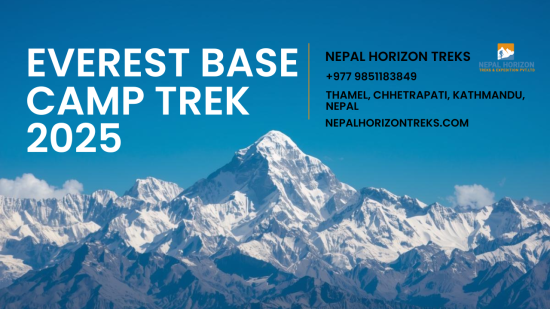
24th October 2025
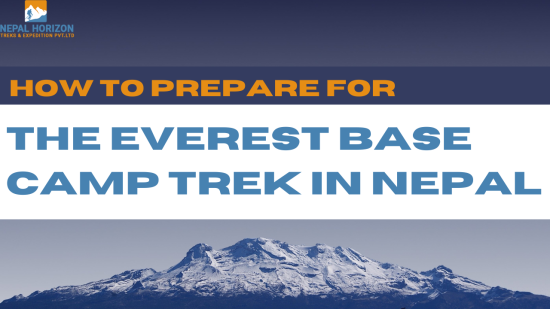
18th October 2025

14th October 2025
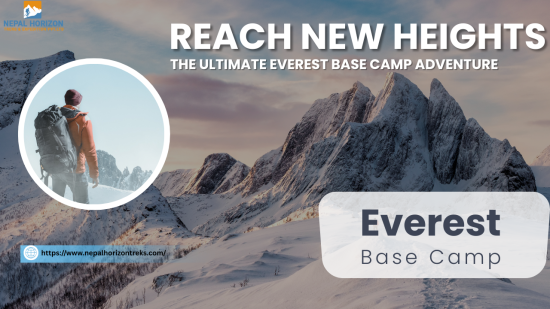
12th October 2025
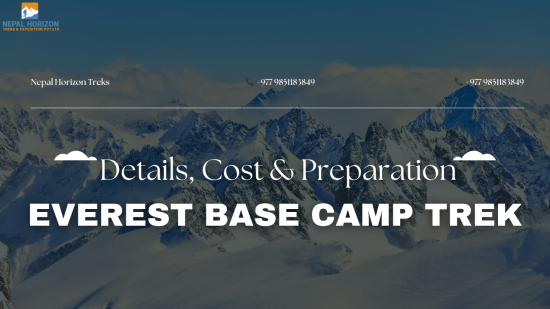
10th October 2025

7th October 2025





